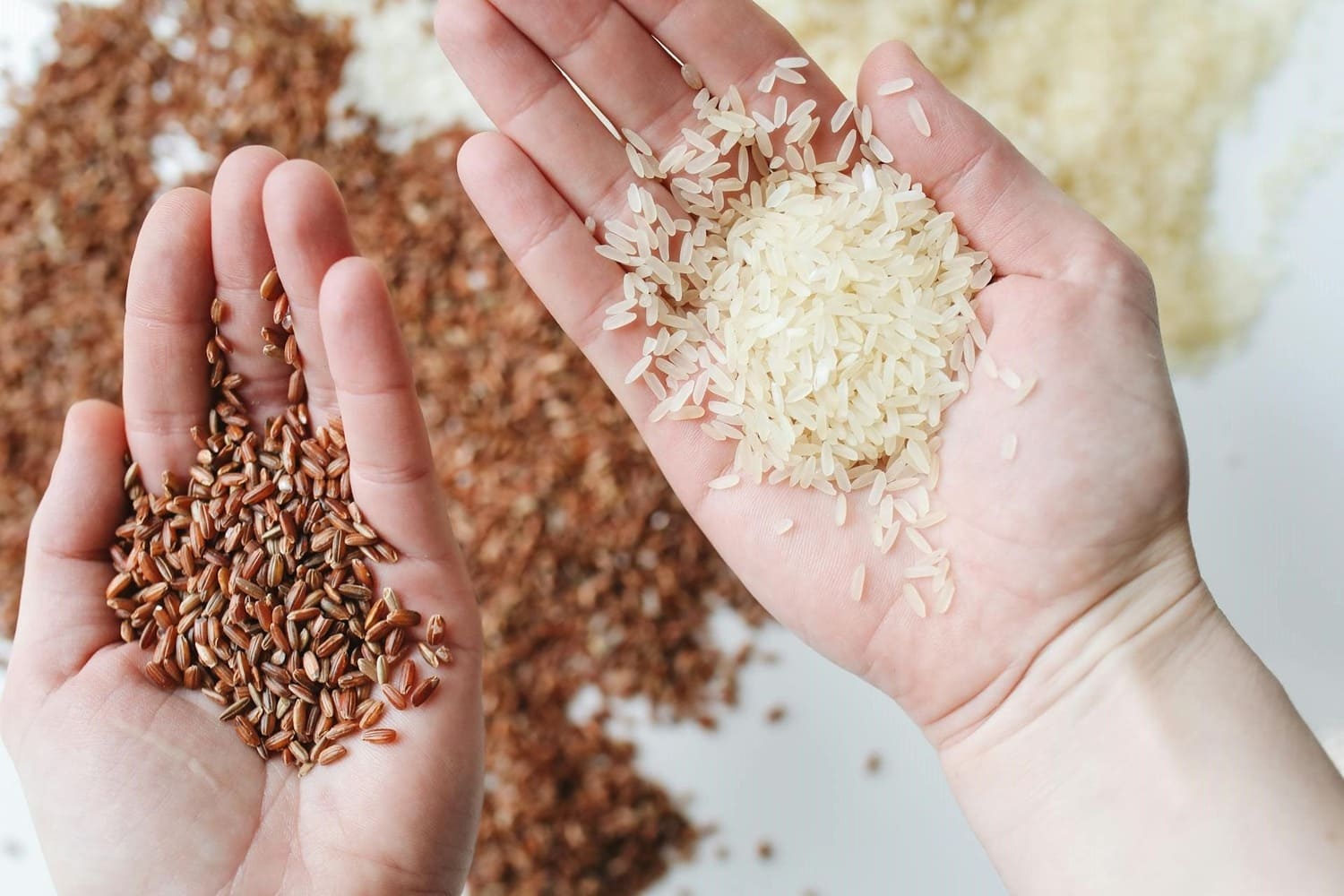Rice is one of the most popular cereals in the world, being a staple in the diet of millions of people. But is it healthy? And which type of rice is best to include in your menu? In this article, we take a look at the different types of rice, their nutritional values and impact on health, based on scientific research.
Nutritional values of rice
Rice, irrespective of the variety, provides mainly carbohydrates, which are the primary source of energy. However, the different types vary in fibre content, vitamins, minerals and glycaemic index.
- White rice – the most processed variety of rice. The milling process removes the bran and germ, causing it to lose most of its fibre, B vitamins and minerals. Compared to whole-grain varieties, it provides fewer nutrients, although it is easily digestible.
- Brown rice – a whole-grain variety of rice, rich in fibre, B vitamins (thiamine, niacin) and magnesium. Studies show that eating whole grain products such as brown rice reduces the risk of cardiovascular disease and aids weight management.
- Black and red rice – known for their high content of antioxidants, such as anthocyanins, which have anti-inflammatory effects and counteract oxidative stress. These rice varieties are also rich in iron, zinc and fibre.
- Wild rice – although technically a water grass seed, it contains more protein and fibre than other varieties. It is also low in calories and rich in magnesium and B vitamins, making it an excellent choice for those concerned about a healthy diet.
Glycaemic index of rice
The glycaemic index (GI) indicates how quickly a product raises blood sugar levels. Rice varieties differ in this respect:
- White rice has a high GI (around 70), which means that it quickly raises blood glucose levels.
- Brown, wild or basmati rice have a lower GI (40-50), which means that their energy is released more slowly, promoting blood sugar stability.
For people with diabetes or insulin resistance, it is recommended to choose varieties with a lower GI, such as brown, basmati or black rice.
Arsenic in rice – is there anything to fear?
Rice can contain traces of arsenic, especially when grown in areas with high soil contamination. Arsenic compounds in excess can be harmful to health, so it is important to use methods that reduce the arsenic content. According to research, rinsing rice before cooking and cooking it in plenty of water can reduce the arsenic content by up to 50%.
Which rice is the healthiest?
Whole-grain varieties of rice, such as brown, black or wild rice, are the best choice. These are rich in fibre, vitamins and minerals, making them a more valuable part of the diet. White rice can be a good option for those with digestive problems, but should be consumed in moderation.
How do you incorporate rice into a healthy diet?
To derive maximum benefit from rice, it is worth combining it with vegetables, healthy fats (e.g. avocado, olive oil) and protein (e.g. chicken, tofu). This will make the meal more balanced and release the energy from the rice gradually.
Find out more if you feel like it:
- FoodData Central, USDA. Wartości odżywcze ryżu białego.
- Slavin, J. (2013). Whole Grains and Human Health. Nutrition Research Reviews.
- Chen, P.N. et al. (2006). Black rice anthocyanins promote antioxidant and anti-inflammatory effects. Journal of Agricultural and Food Chemistry.
- Anderson, J.W. et al. (2009). Whole grains and risk of cardiovascular disease: a meta-analysis. Nutrition Research.
- Jenkins, D.J.A. et al. (2002). Glycemic index of foods: a physiological basis for carbohydrate exchange. The American Journal of Clinical Nutrition.
- Meharg, A.A. et al. (2008). Reducing arsenic intake by cooking rice in excess water. Environmental Science & Technology.

